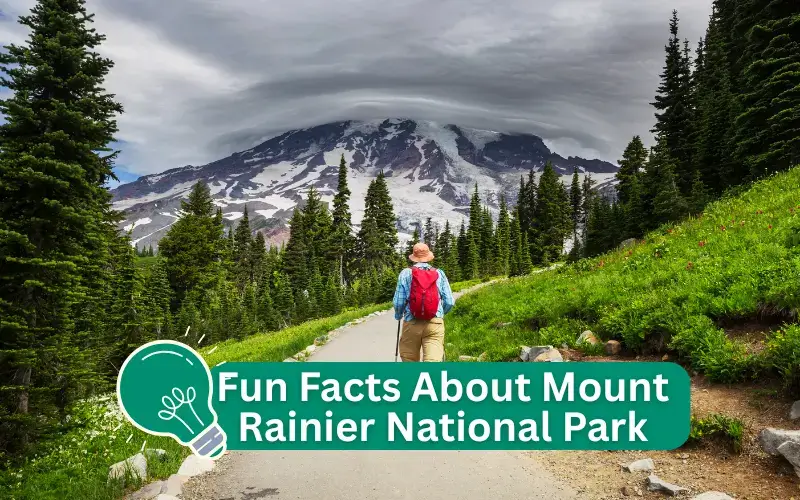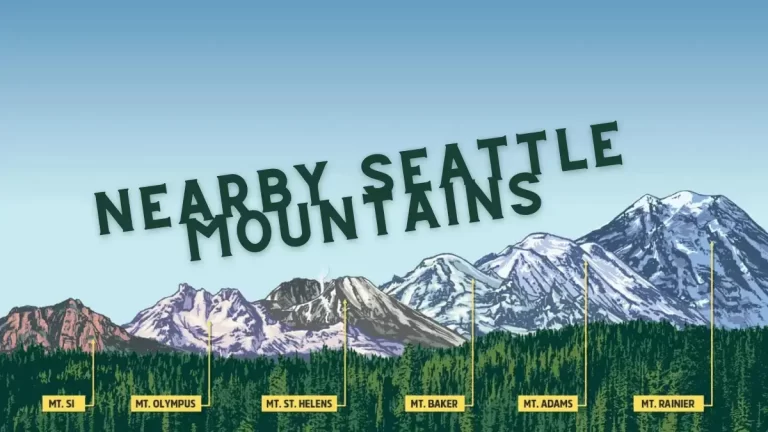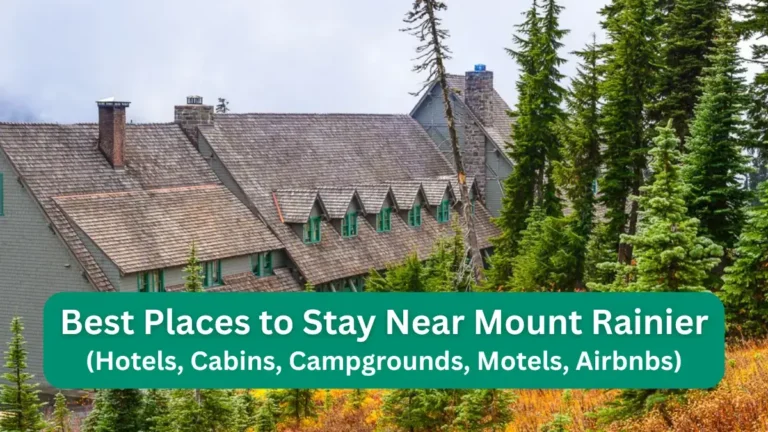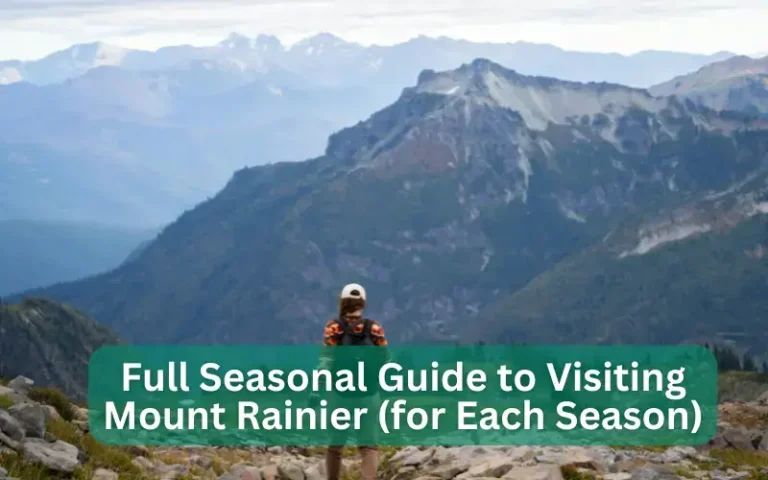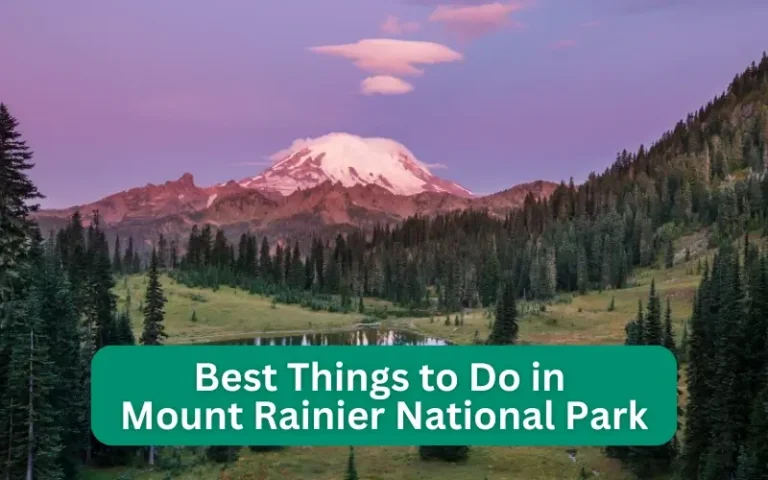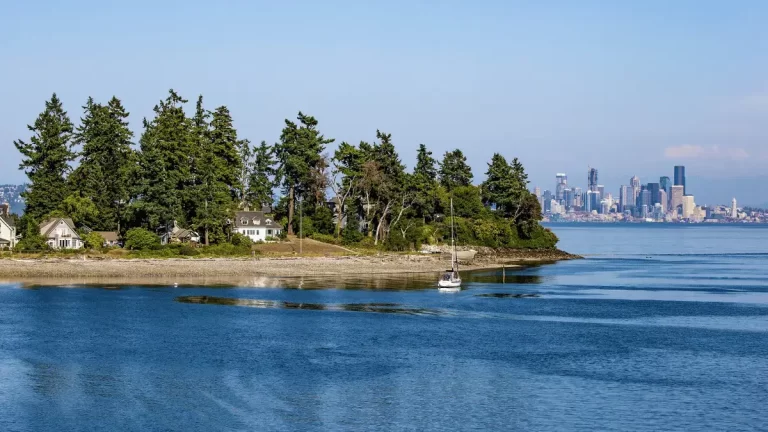Mount Rainier National Park is one of America’s most spectacular wilderness destinations. It towers 14,410 feet above sea level in Washington state. This ancient volcanic giant harbors secrets that span millennia. These range from Native American legends to modern mountaineering achievements.
The park is a haven for hikers, with over 260 miles of trails. And it offers stunning views of wildflowers, ancient forests, and cascading waterfalls.
Let me share 50 more amazing fun facts about Mount Rainier National Park. Whether planning things to do or places to stay, these facts highlight the reasons you should visit Mount Rainier.
Fun Facts About Mount Rainier National Park for Kids
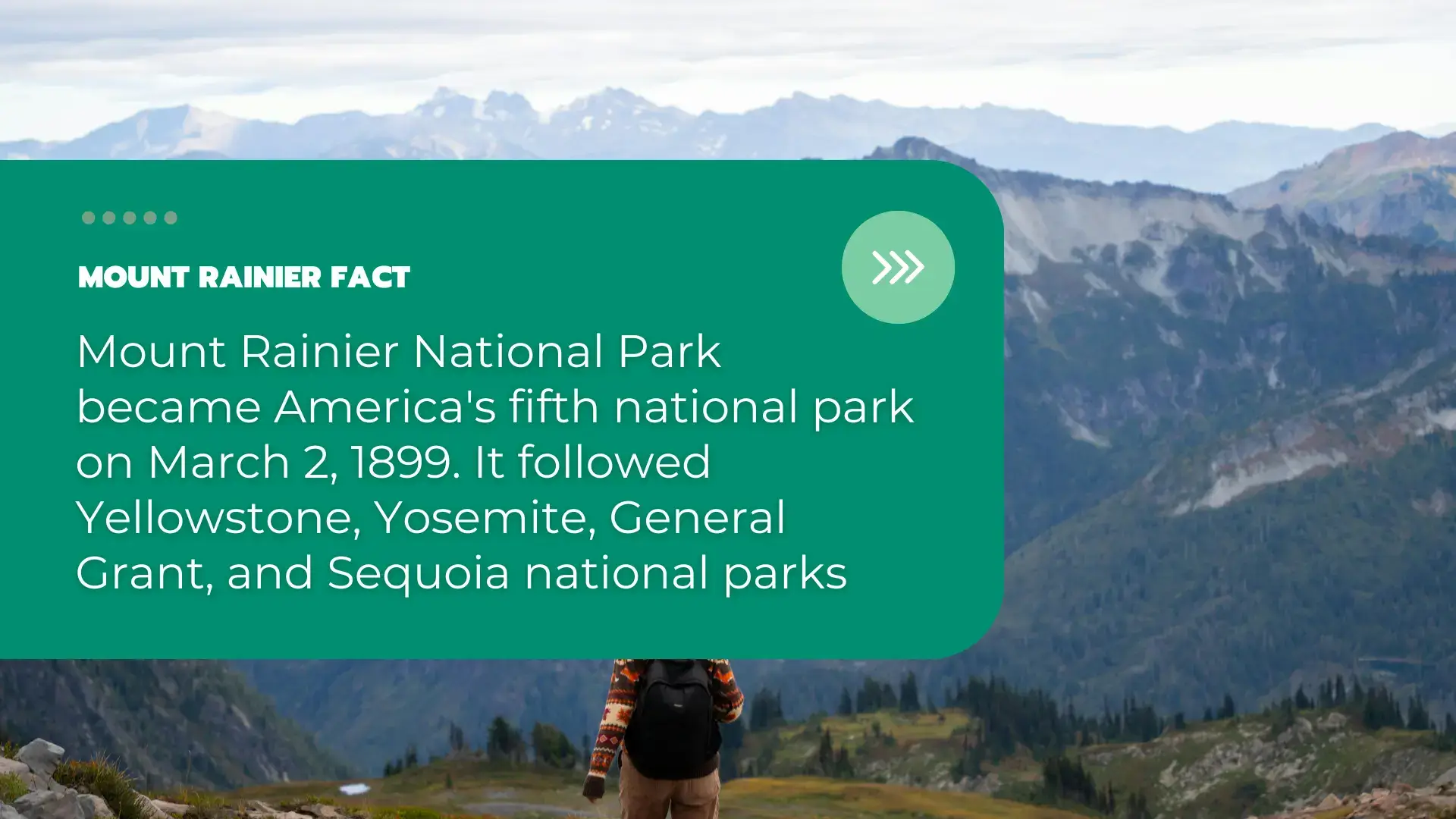
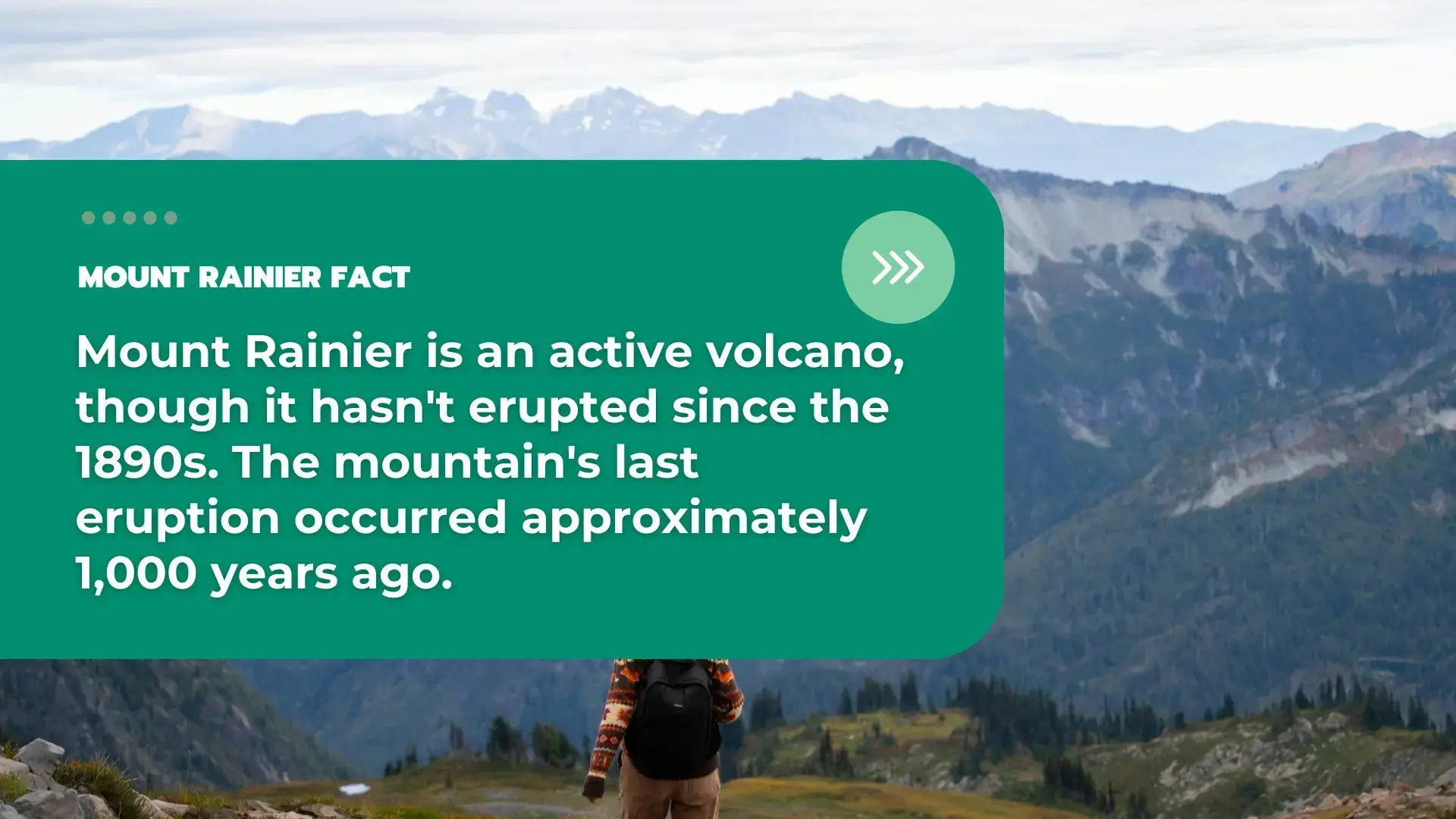
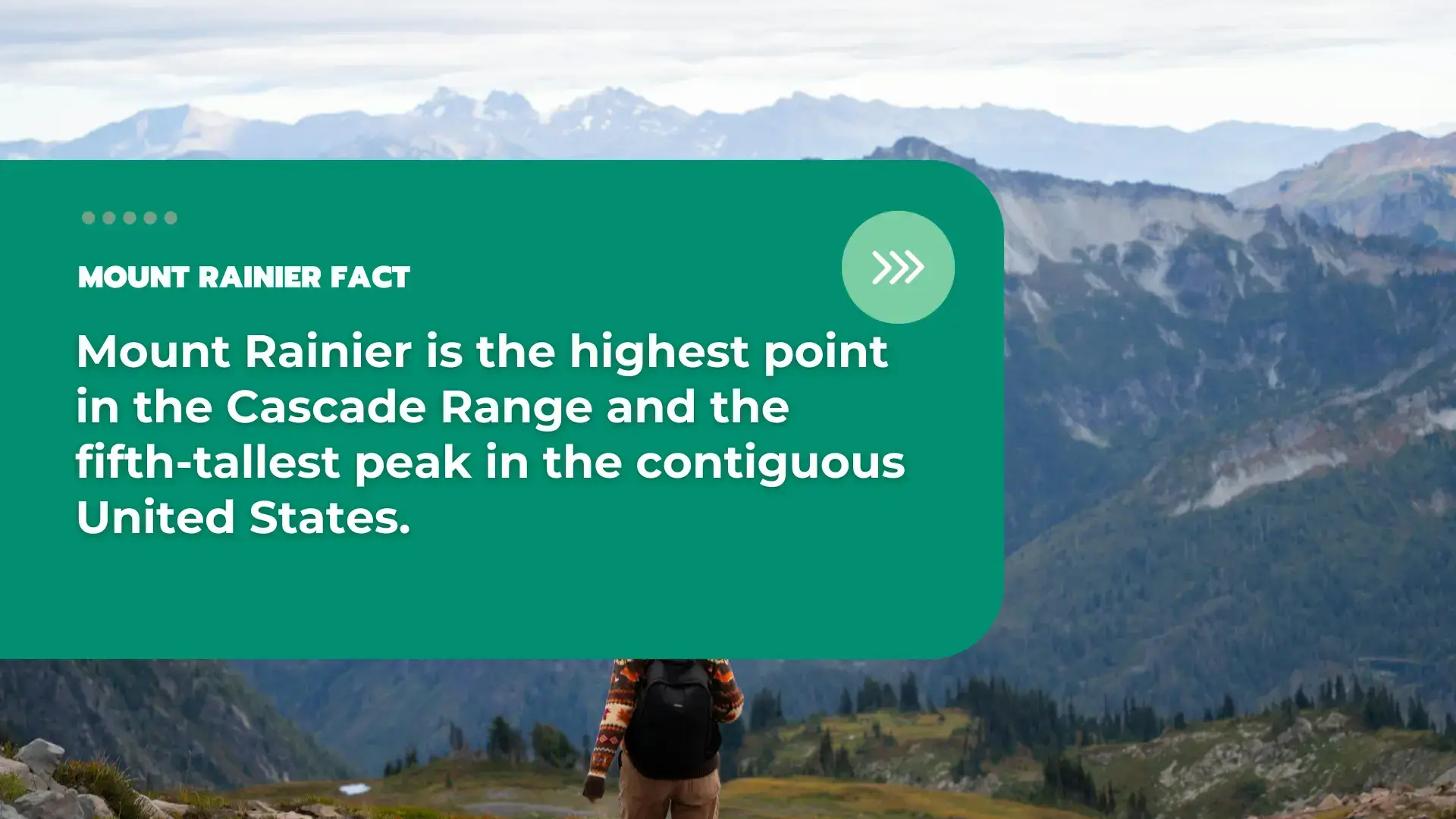
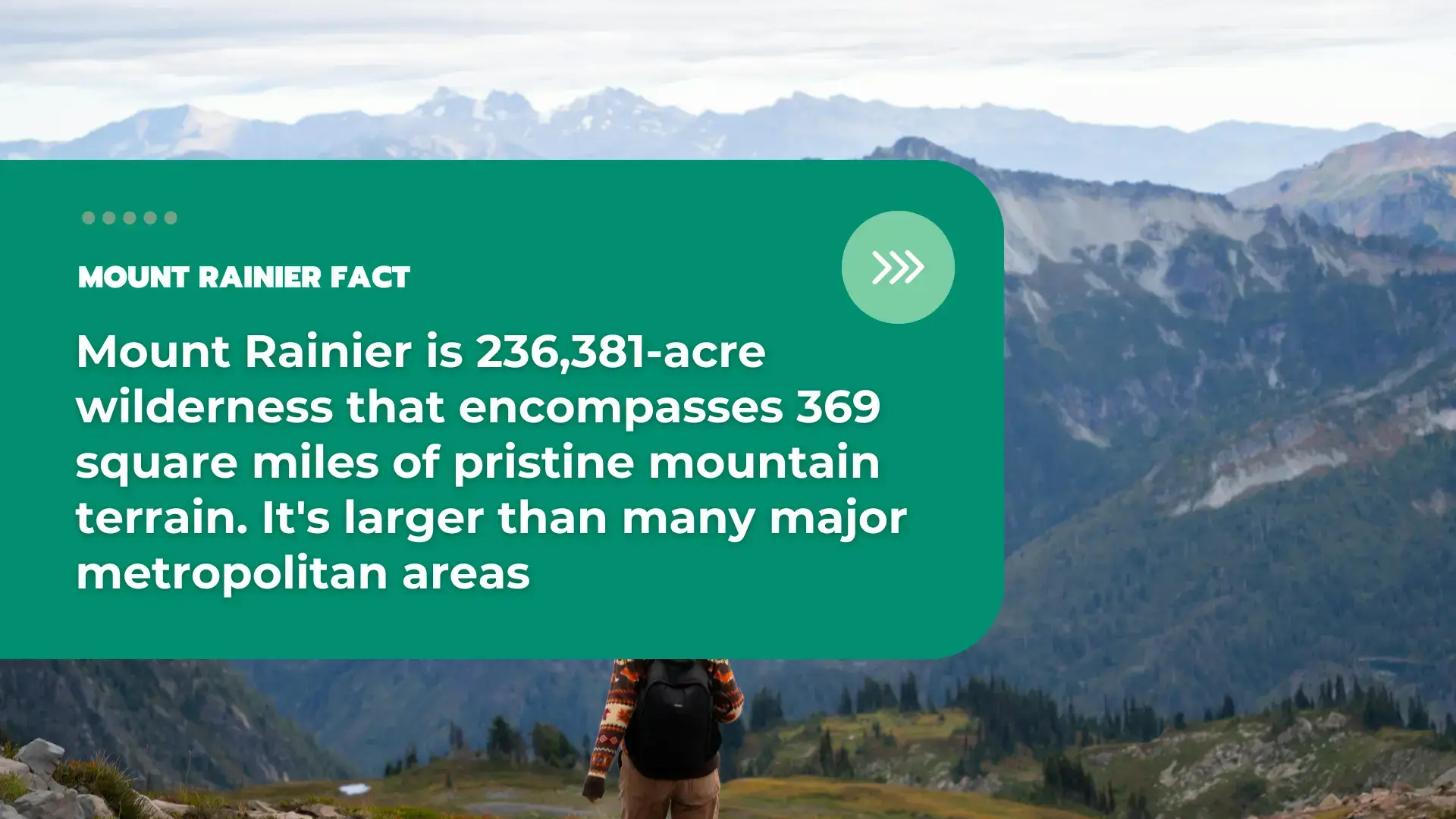
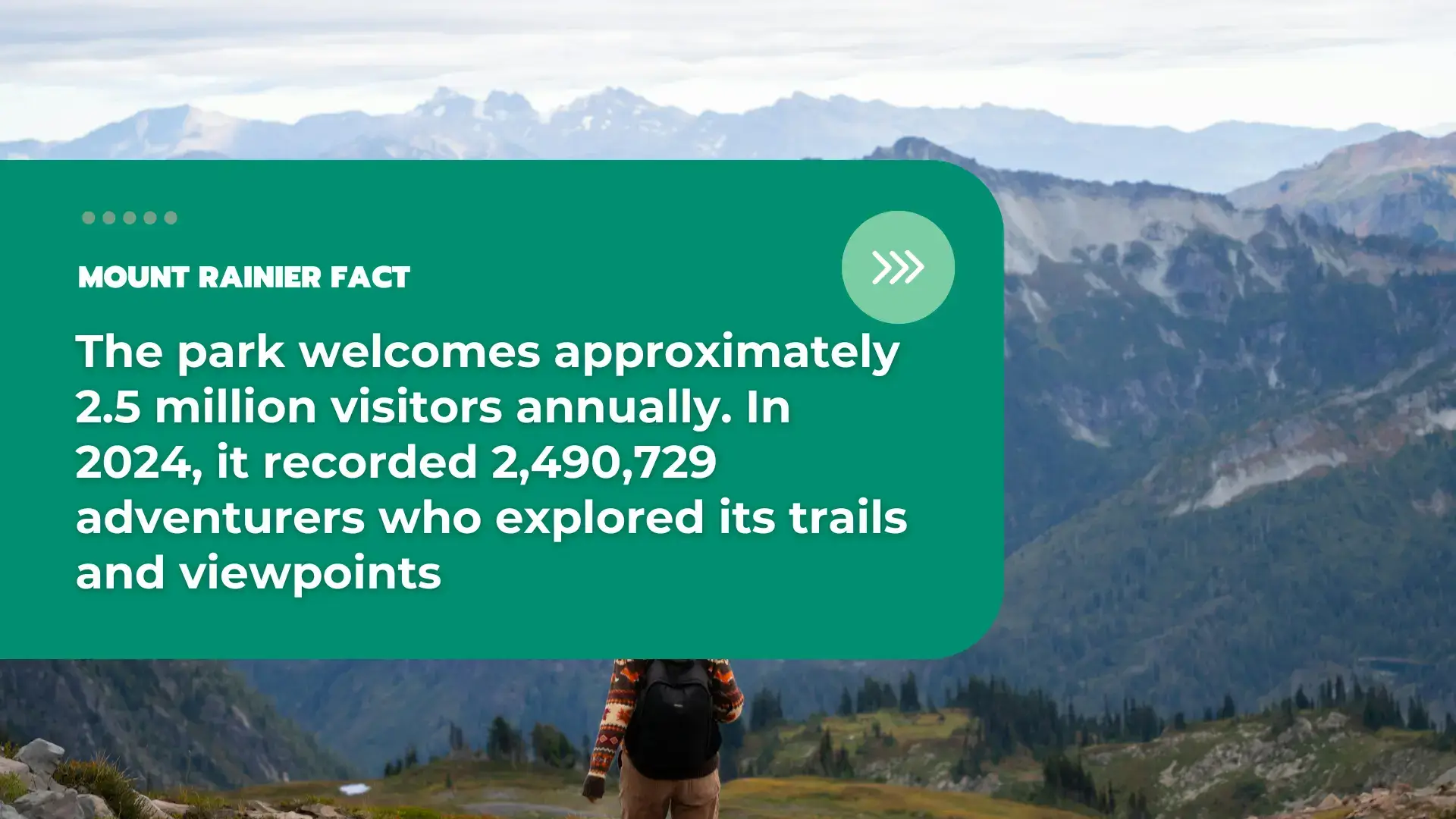
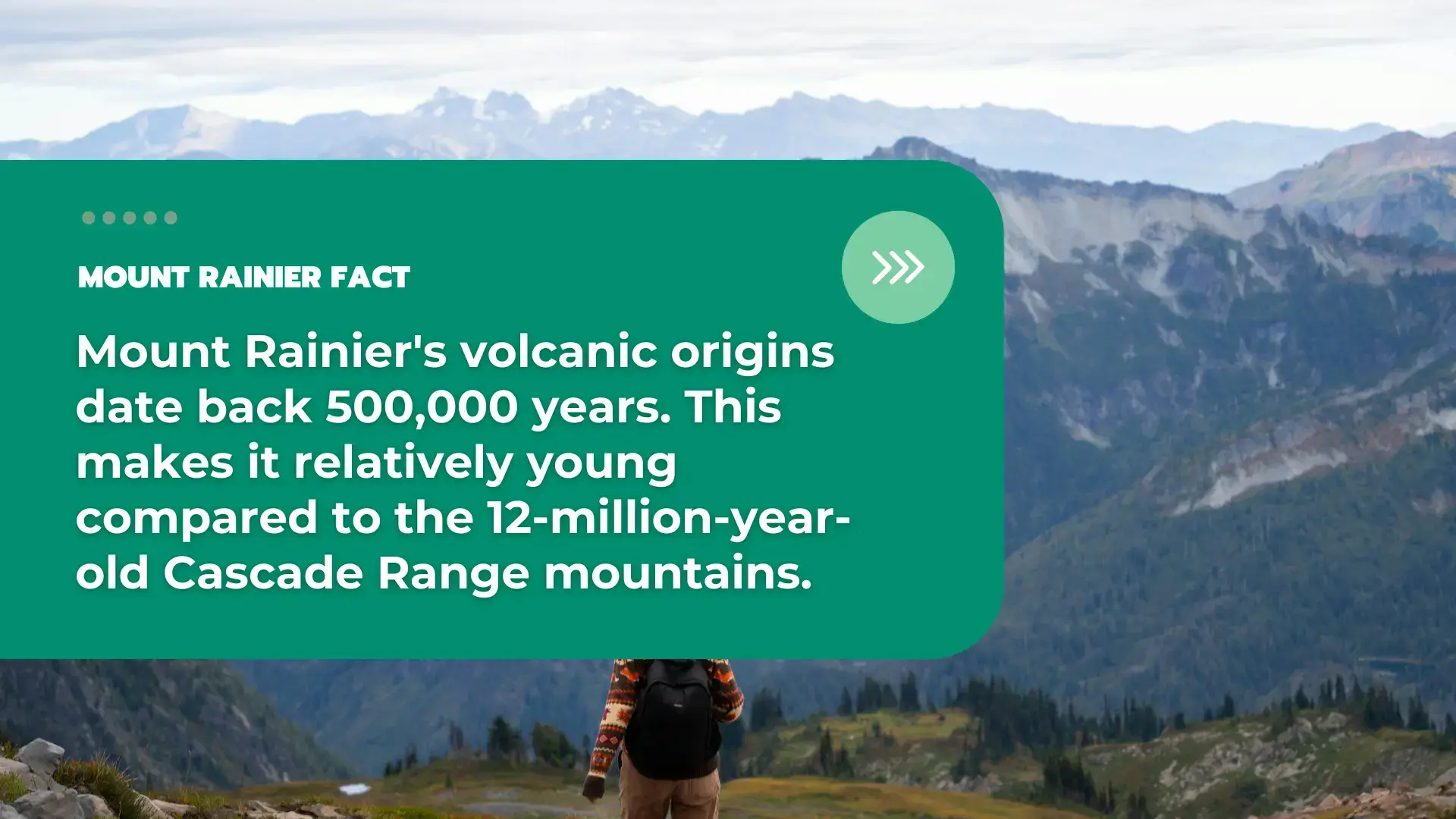
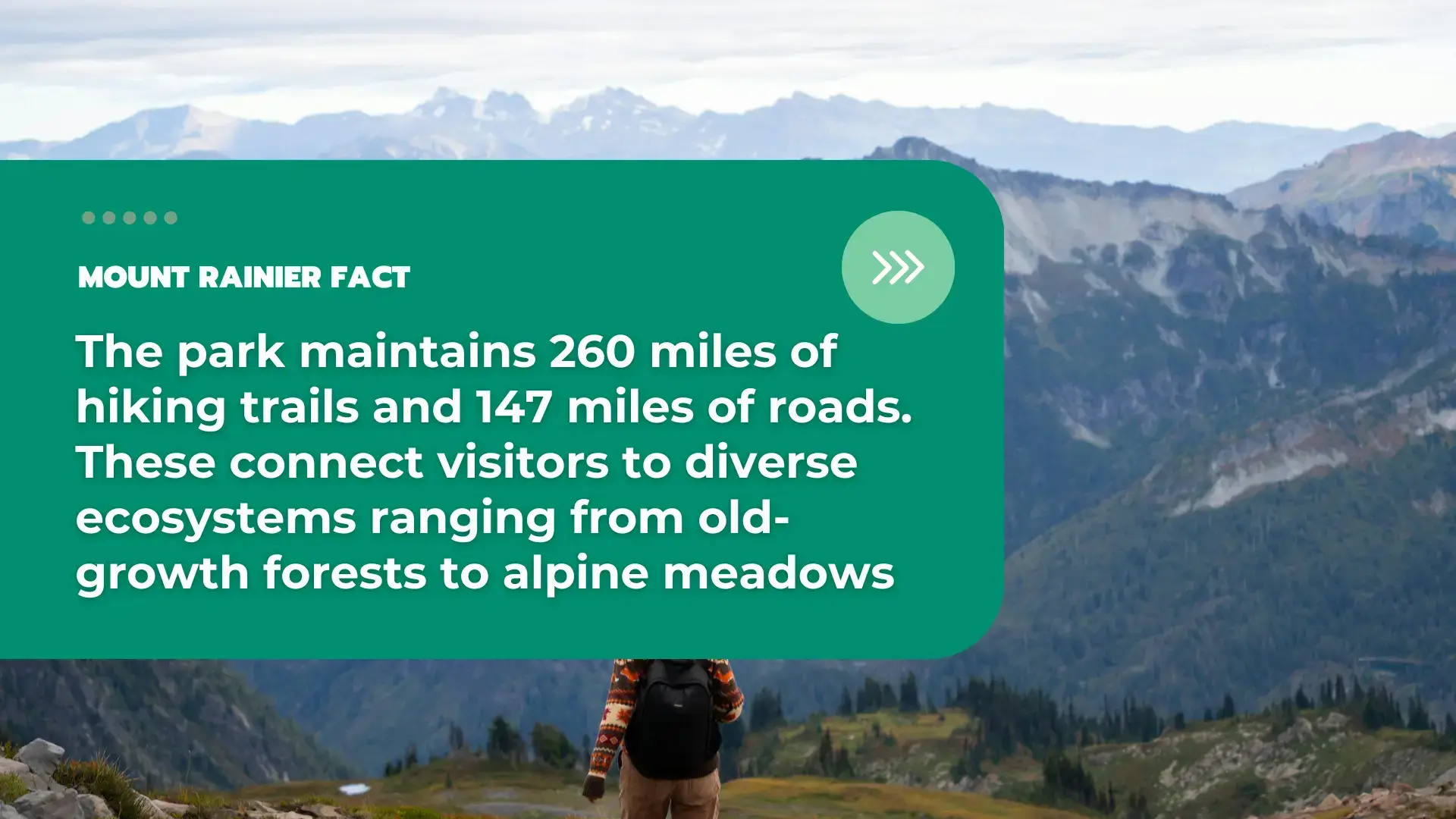
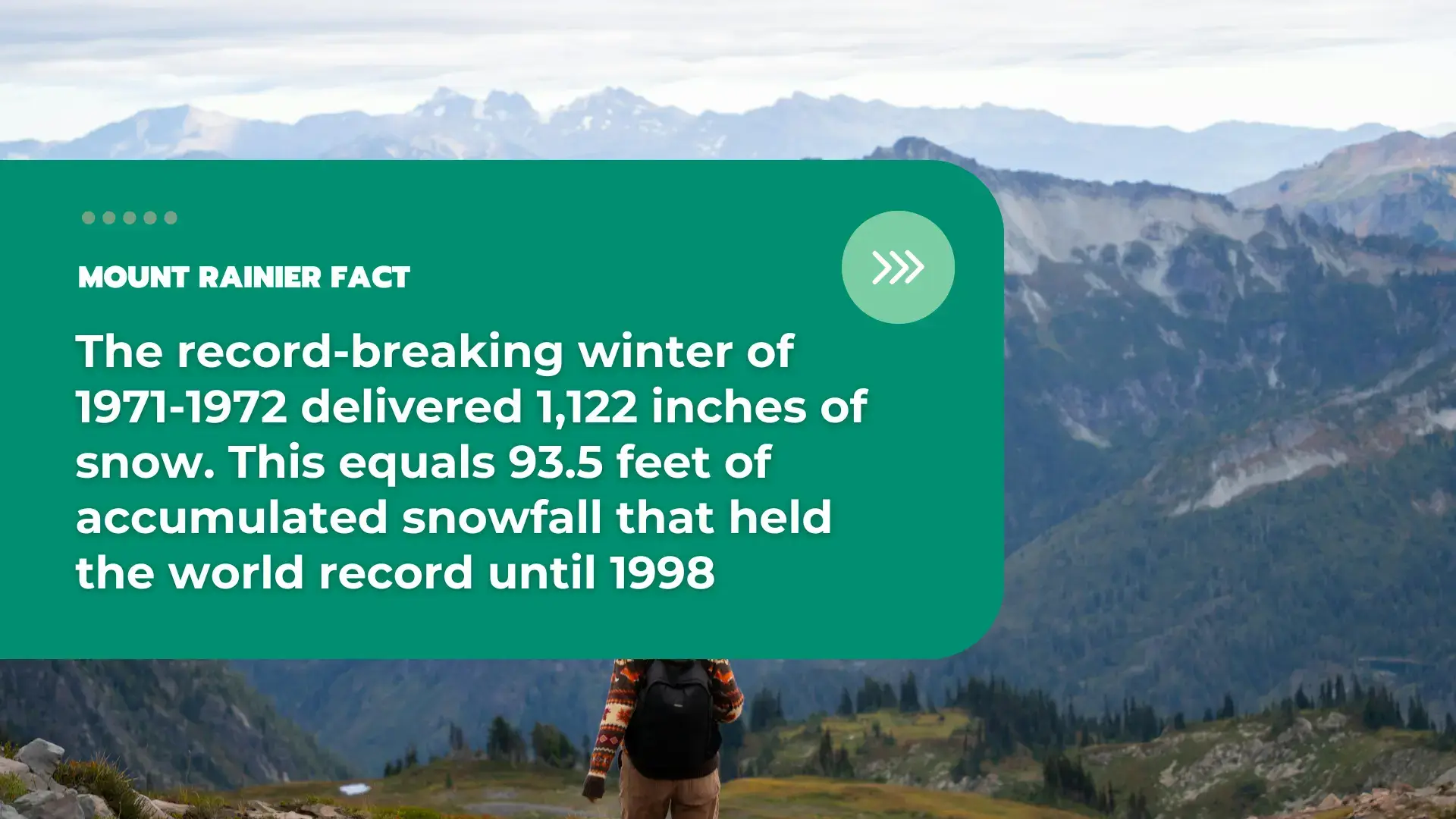
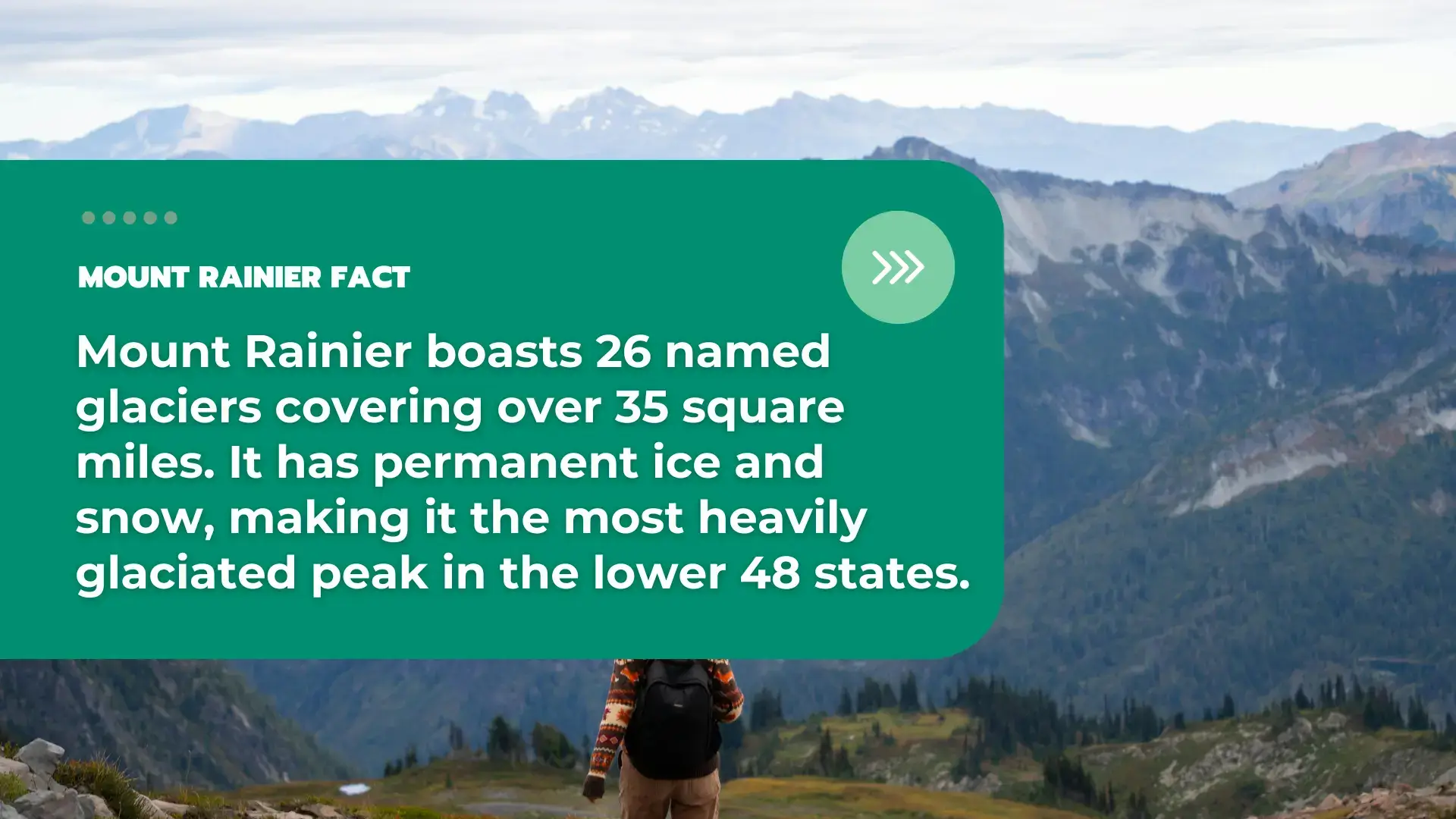
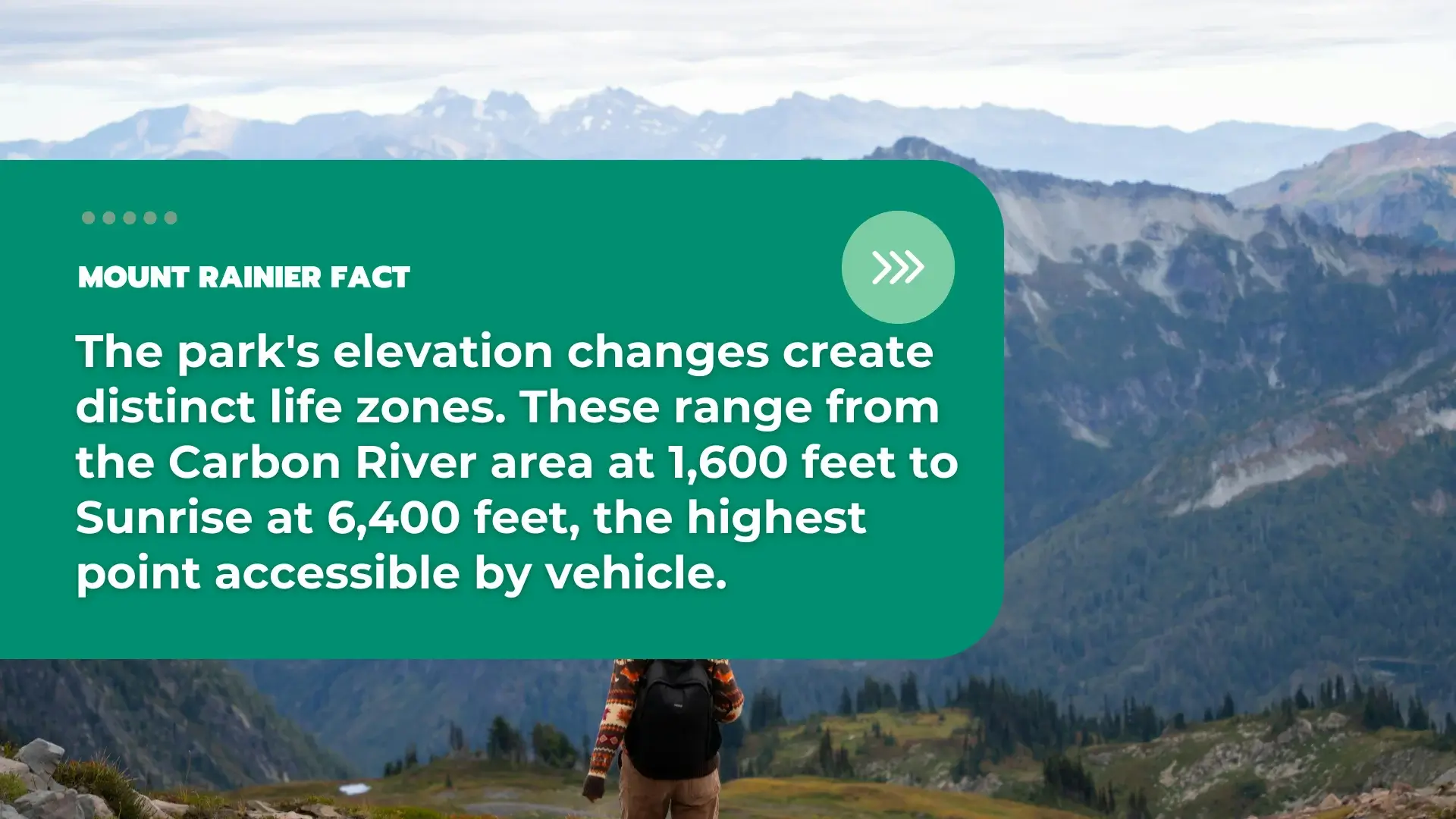
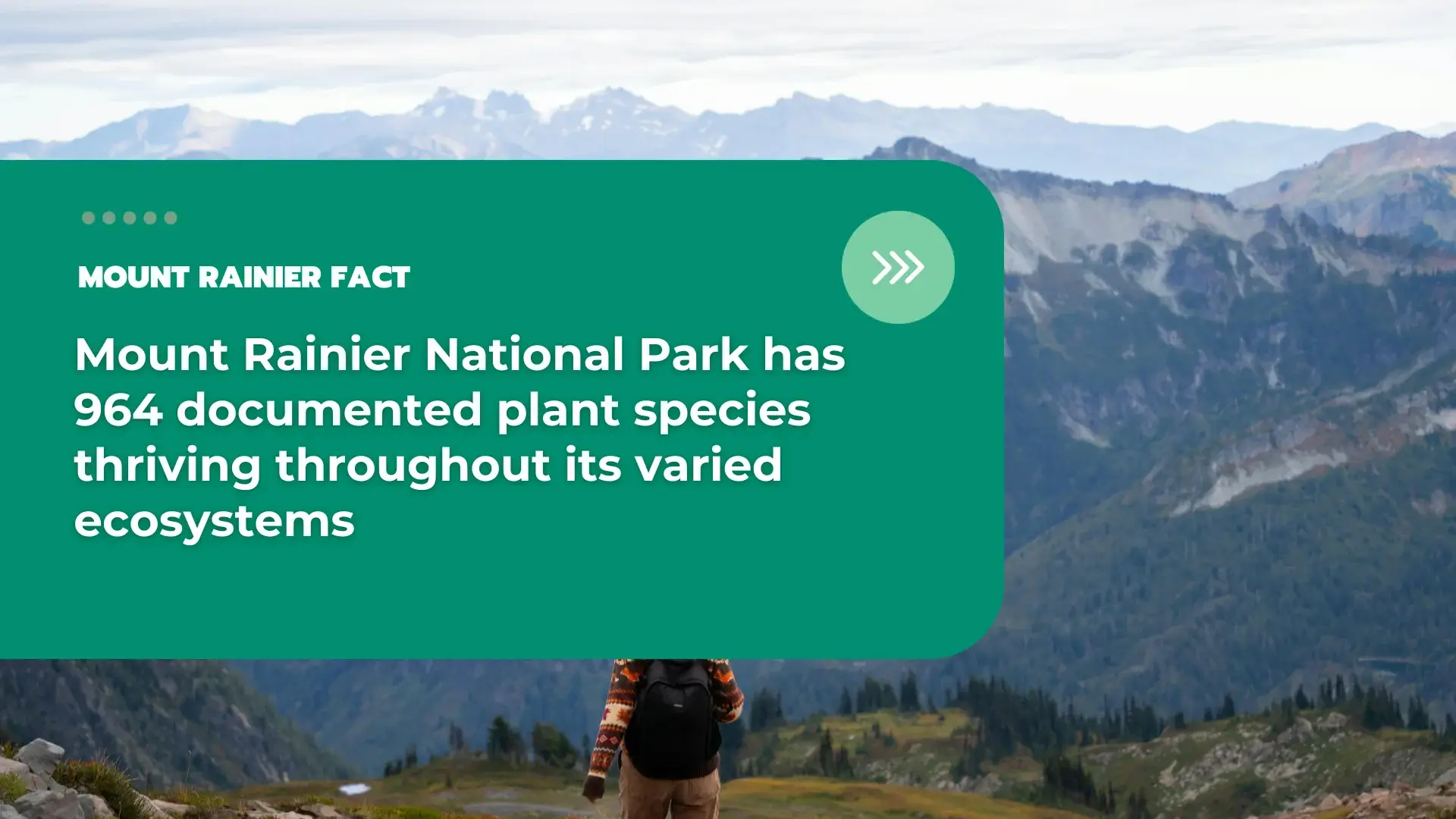
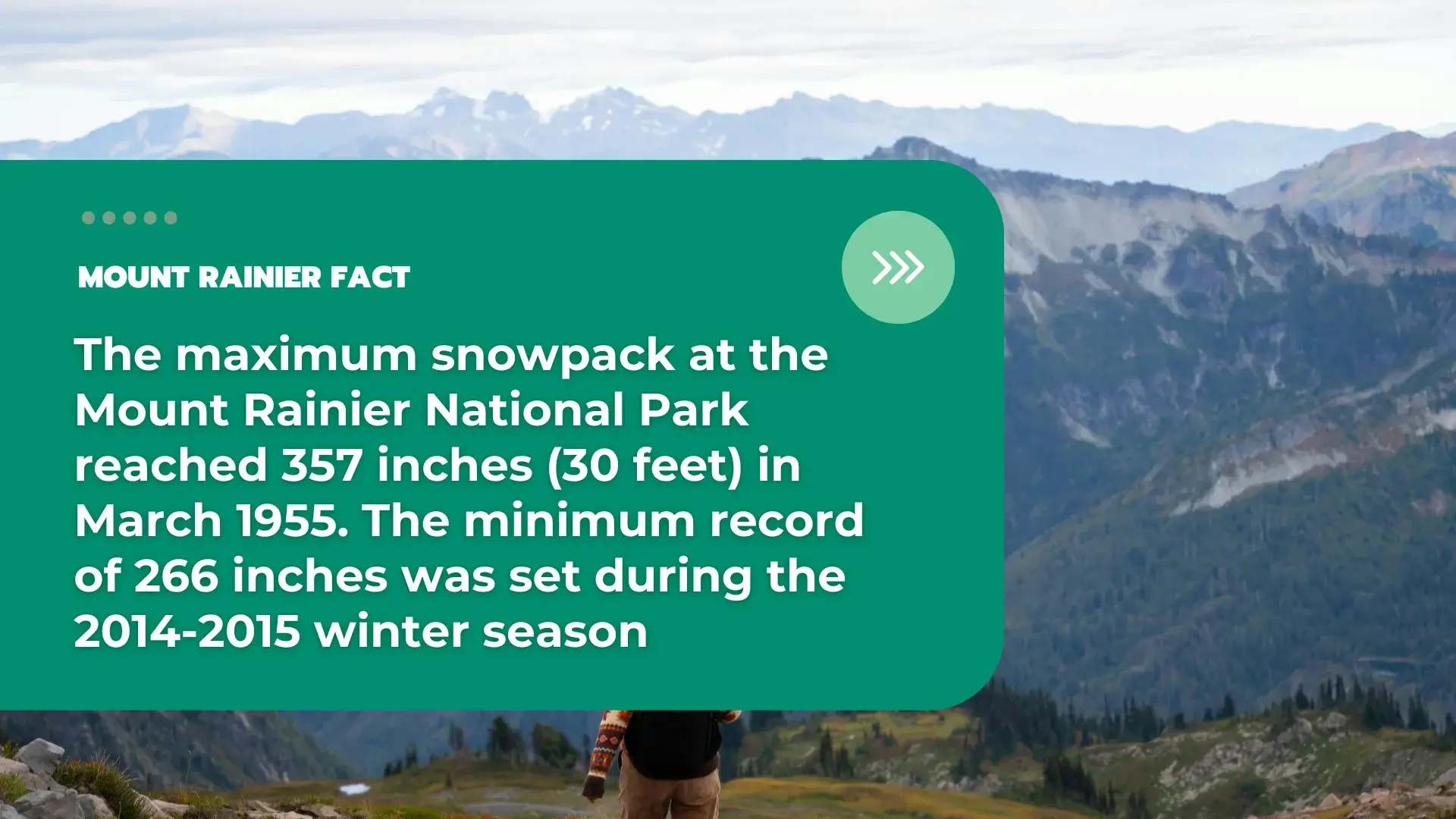
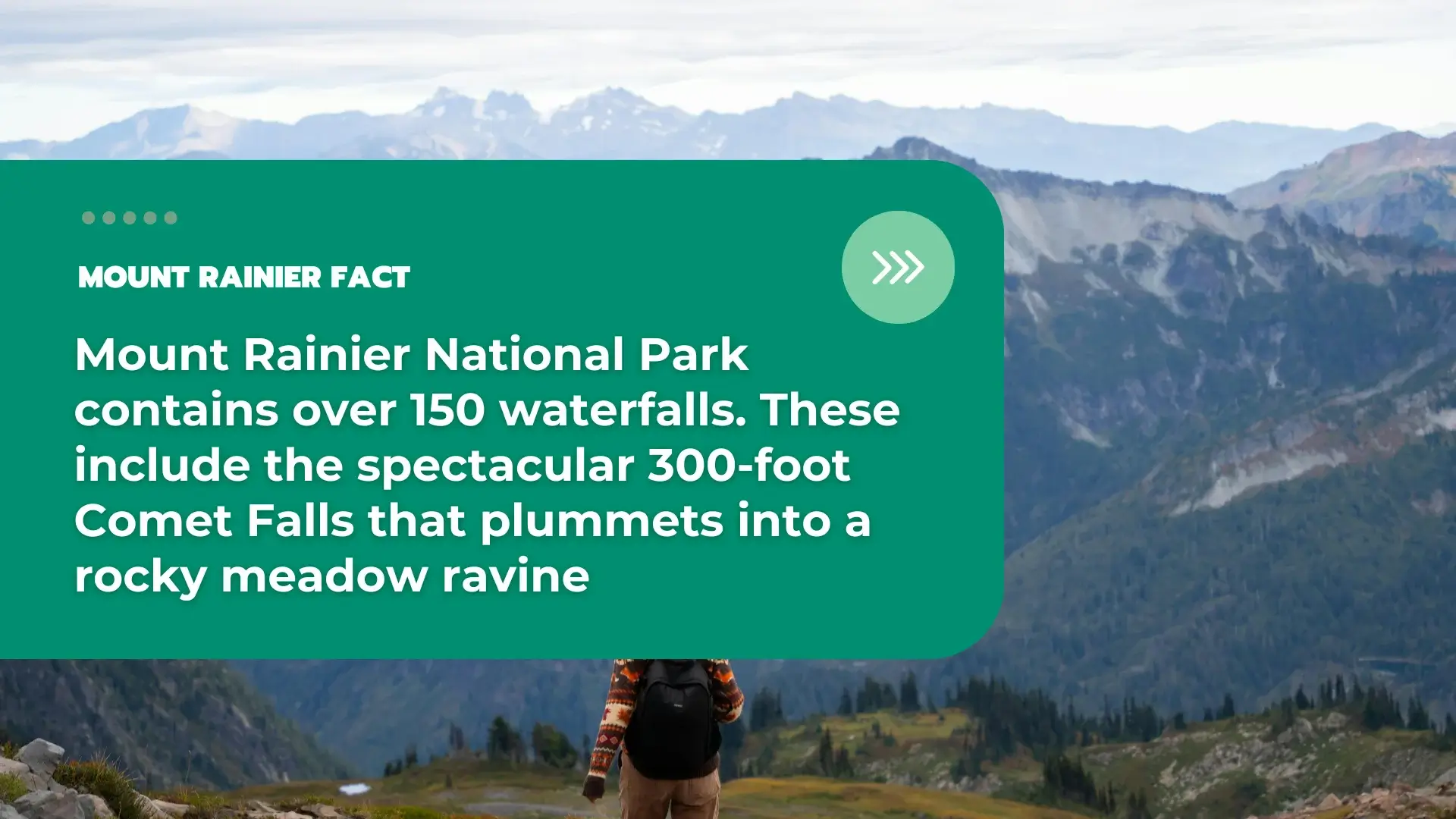
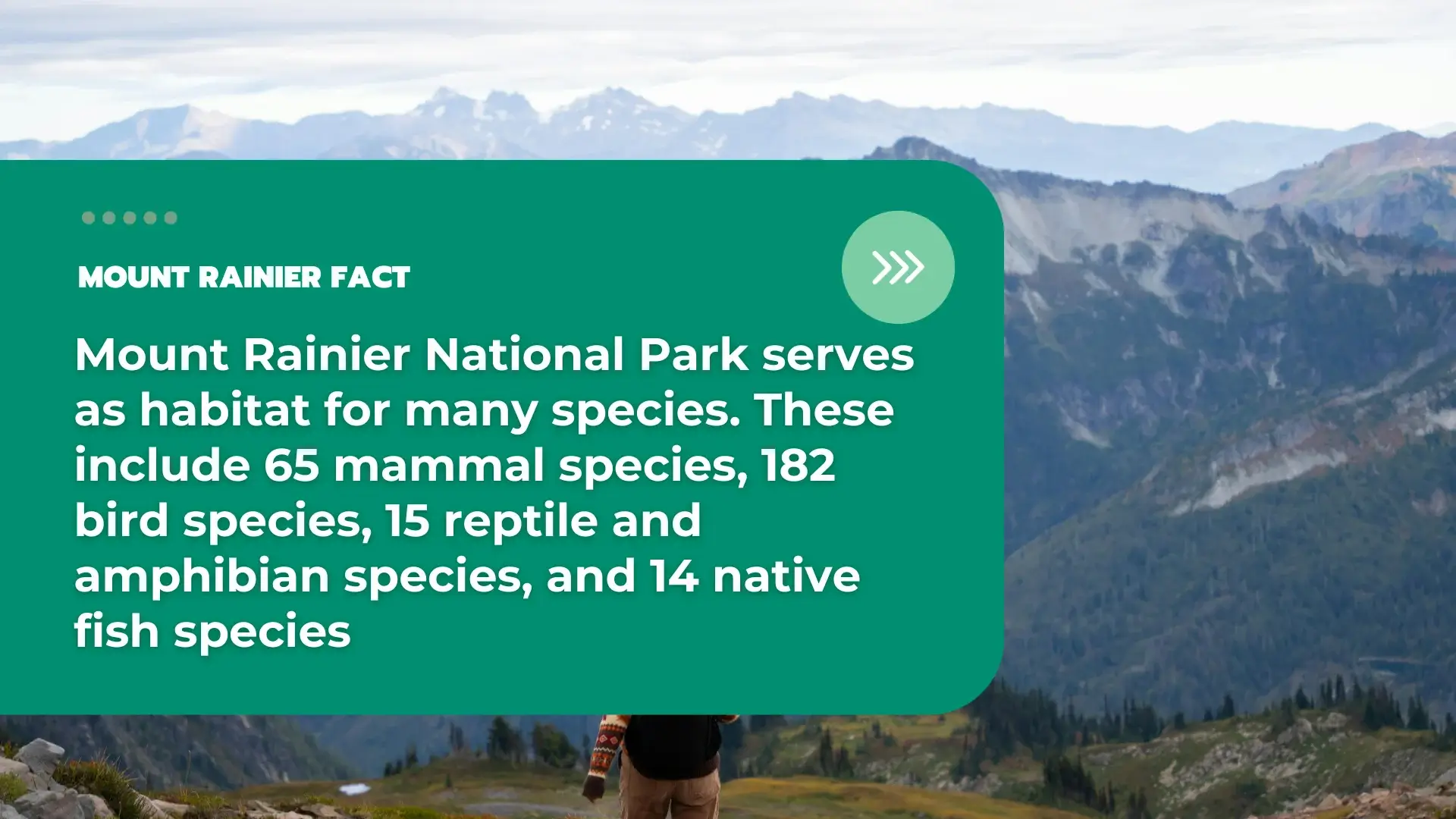
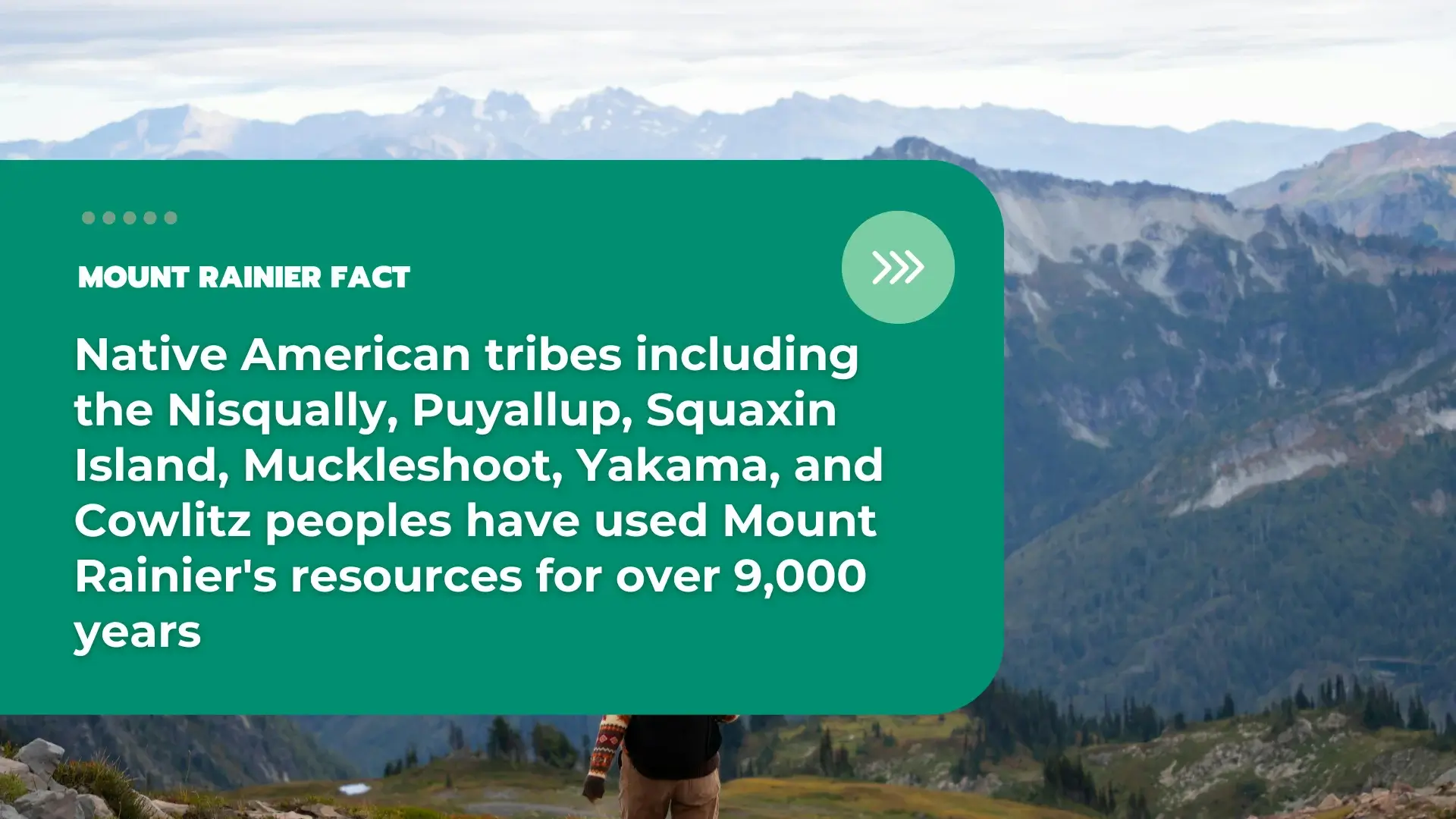
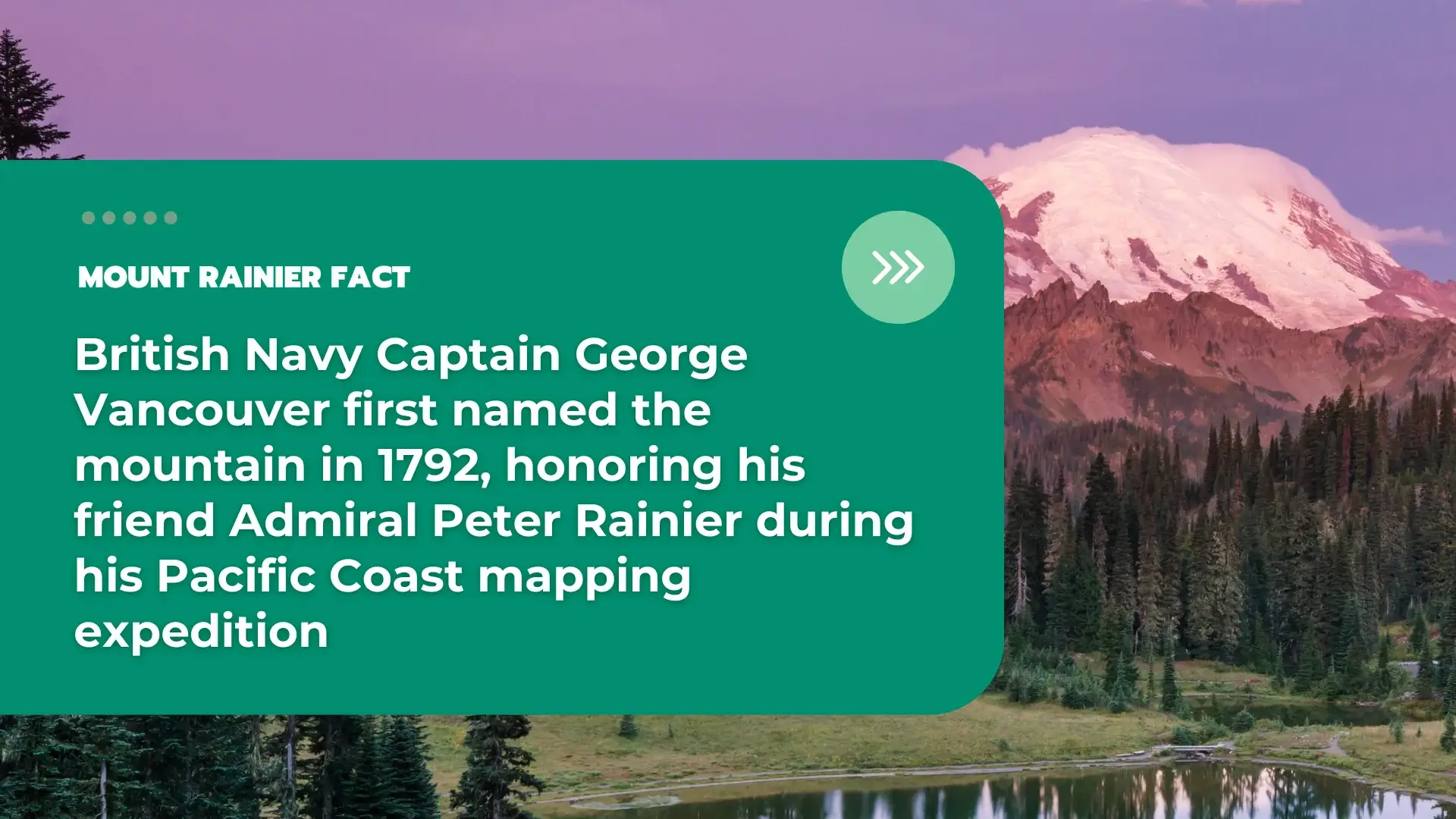
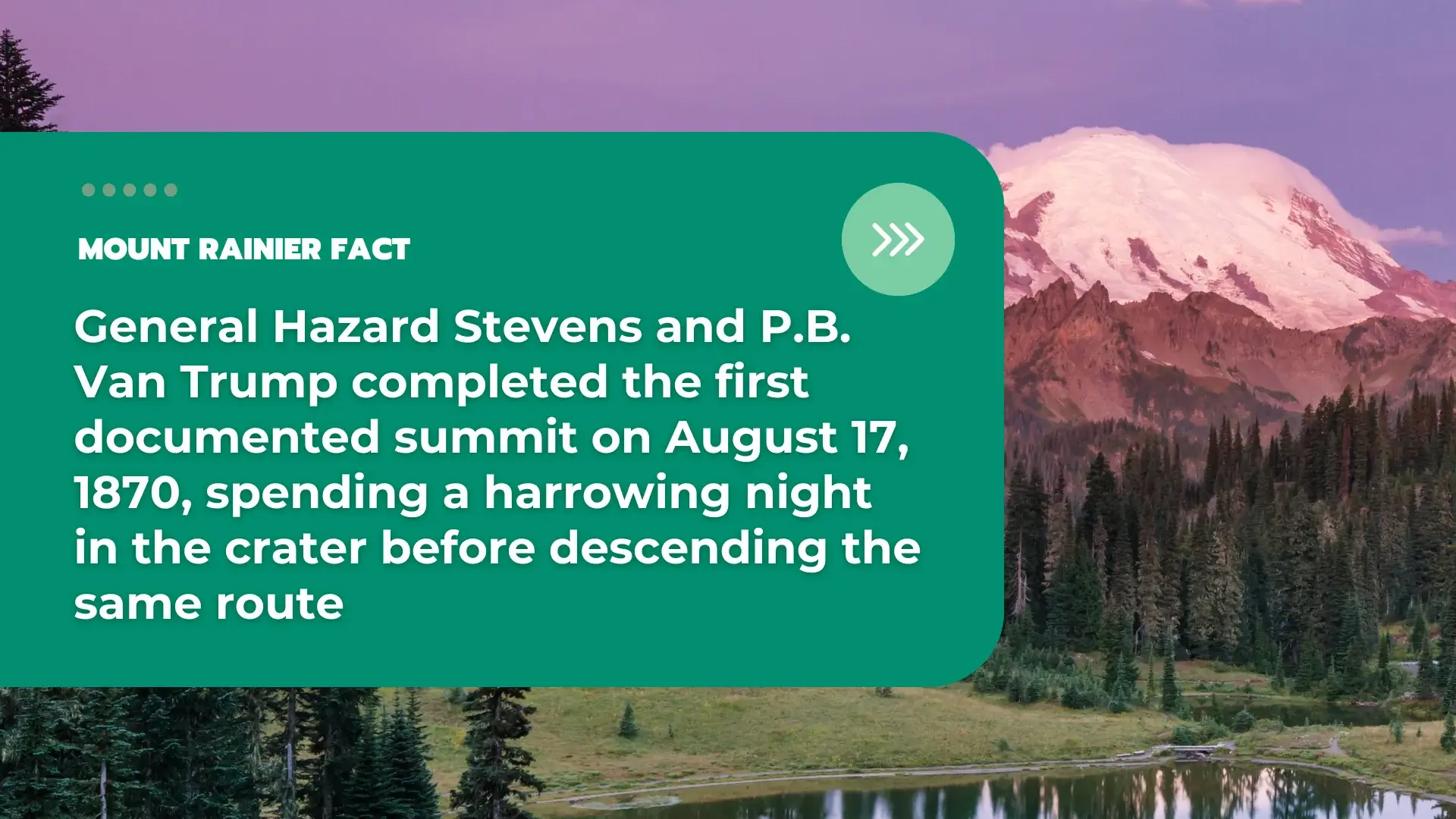
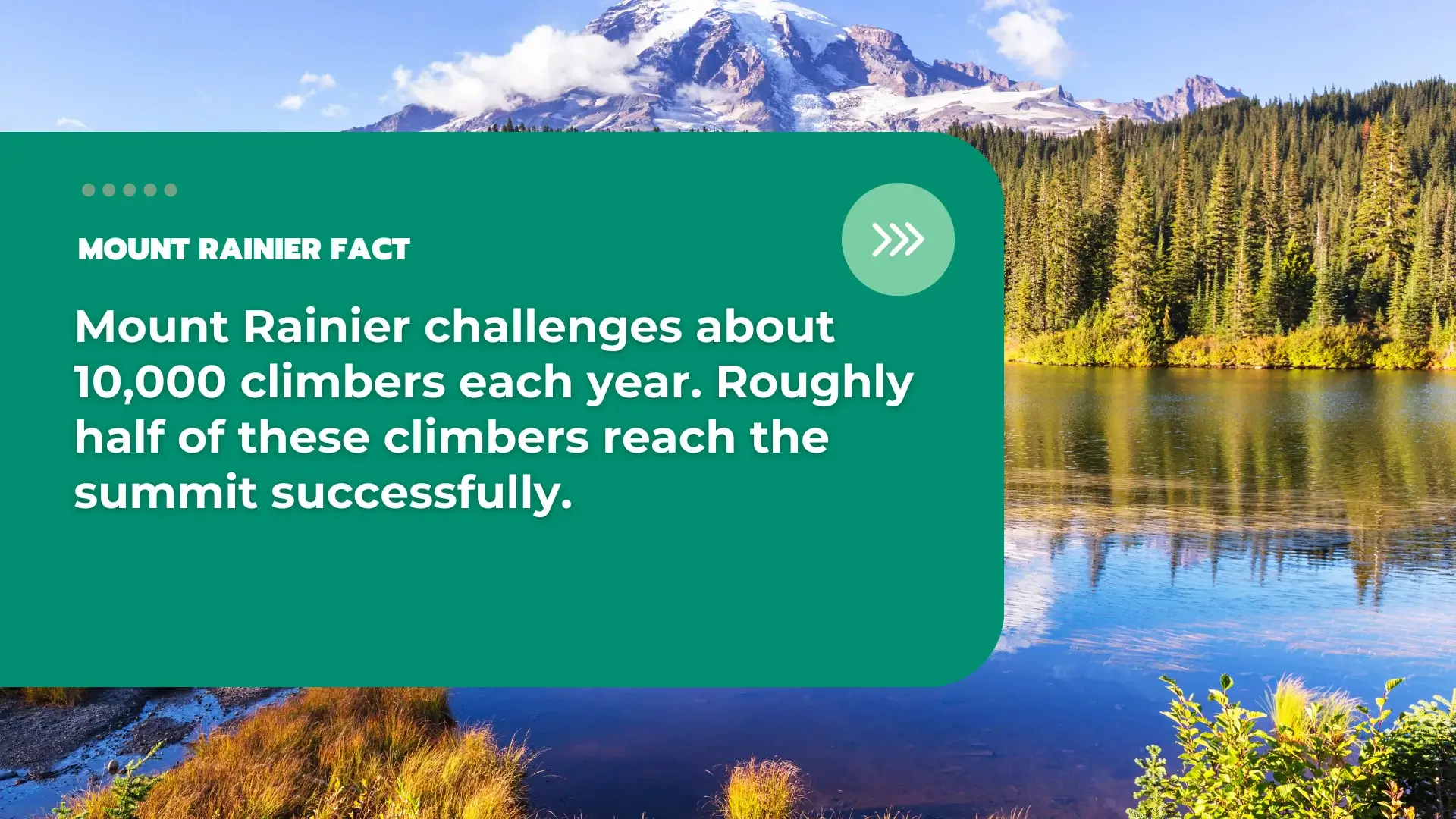
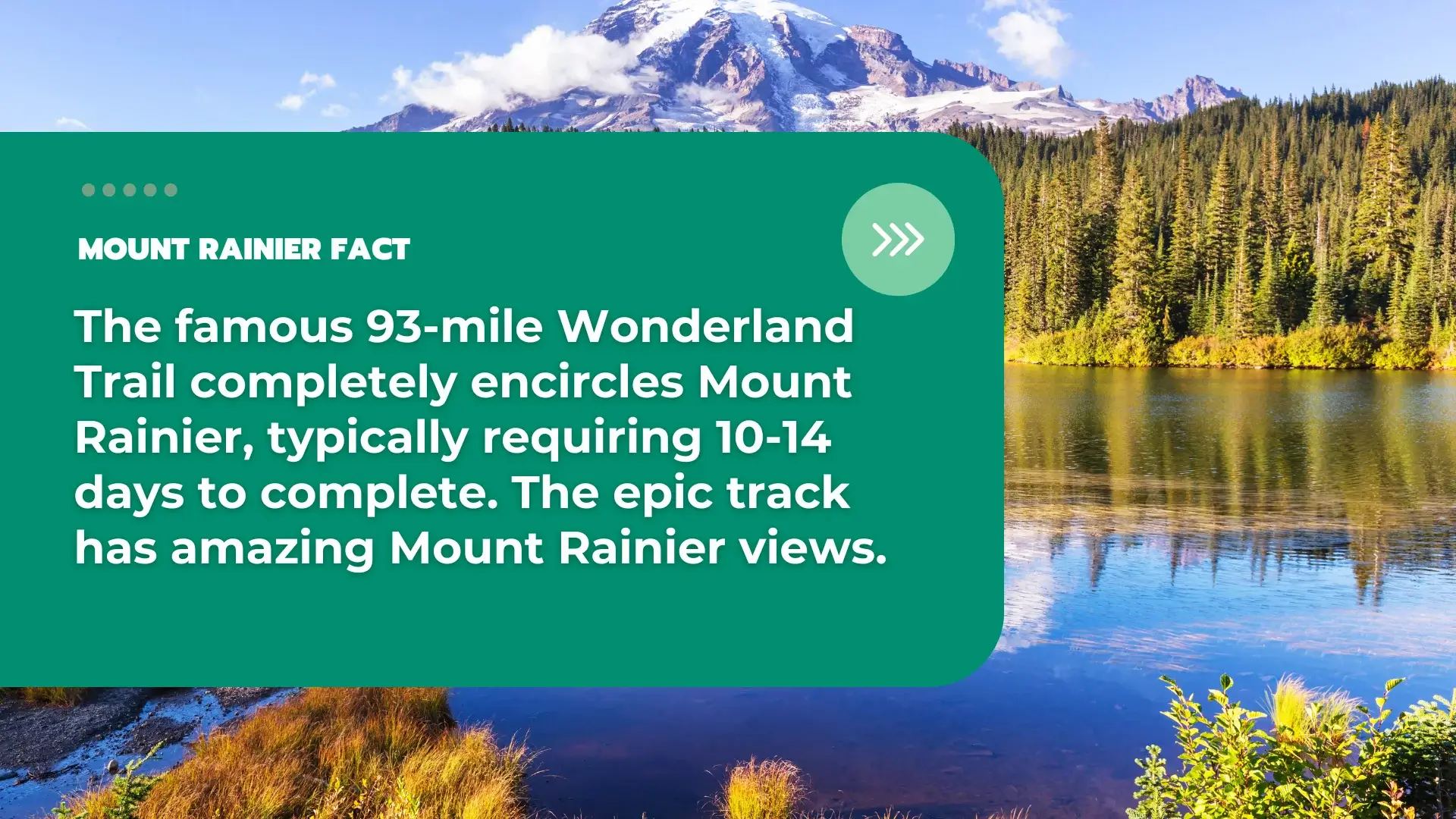
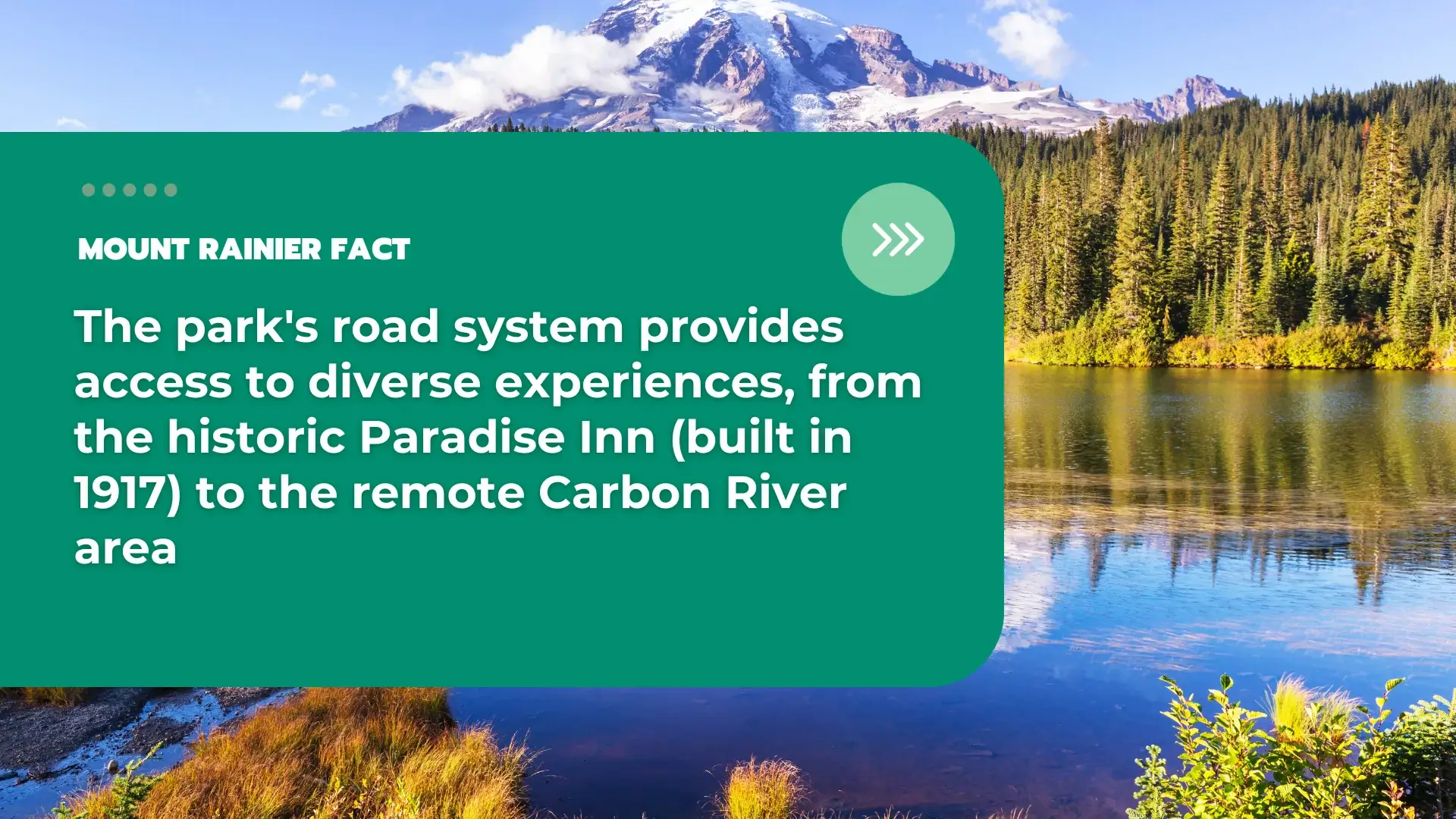
- Mount Rainier National Park became America’s fifth national park on March 2, 1899. It followed Yellowstone, Yosemite, General Grant, and Sequoia national parks
- Mount Rainier is an active volcano, though it hasn’t erupted since the 1890s.
- Mount Rainier is the highest point in the Cascade Range and the fifth-tallest peak in the contiguous United States.
- This 236,381-acre wilderness encompasses 369 square miles of pristine mountain terrain. It’s larger than many major metropolitan areas
- The park welcomes approximately 2.5 million visitors annually. In 2024, it recorded 2,490,729 adventurers who explored its trails and viewpoints
- These numbers reflect the park’s accessibility from major population centers. It’s positioned just 95 miles from Seattle and 70 miles from Tacoma
- Mount Rainier’s volcanic origins date back 500,000 years. This makes it relatively young compared to the 12-million-year-old Cascade Range mountains surrounding it
- The mountain’s last eruption occurred approximately 1,000 years ago. Geological monitoring continues due to its active volcanic status
- The park maintains 260 miles of hiking trails and 147 miles of roads. These connect visitors to diverse ecosystems ranging from old-growth forests to alpine meadows
- Five visitor centers serve as gateways to exploration. These are Paradise Jackson, Sunrise, Ohanapecosh, Longmire Museum, and the Wilderness Information Center
- Winter transforms the landscape dramatically. Paradise receives an average of 639 inches of snowfall annually
- The record-breaking winter of 1971-1972 delivered 1,122 inches of snow. This equals 93.5 feet of accumulated snowfall that held the world record until 1998
In 1947, pilot Kenneth Arnold described seeing a series of unusual objects near Mount Rainier that moved “like saucers skipping on water.” The media quickly embraced the phrase, which became widely popular.
Fascinating Facts About Mount Rainier National Park for Nature Lovers
- Mount Rainier boasts 26 named glaciers covering over 35 square miles. It has permanent ice and snow, making it the most heavily glaciated peak in the lower 48 states.
- Emmons Glacier has the largest surface area at 4.3 square miles. Carbon Glacier stretches 5.7 miles to become the longest glacier in the lower 48 states
- The park’s elevation changes create distinct life zones. These range from the Carbon River area at 1,600 feet to Sunrise at 6,400 feet, the highest point accessible by vehicle
- This dramatic elevation gradient supports incredible biodiversity. The park has 964 documented plant species thriving throughout its varied ecosystems
- Paradise’s legendary snowfall creates one of the snowiest places on Earth. This is where measurements are regularly recorded
- The maximum snowpack reached 357 inches (30 feet) in March 1955. The minimum record of 266 inches was set during the 2014-2015 winter season
- The park contains over 150 waterfalls. These include the spectacular 300-foot Comet Falls that plummets into a rocky meadow ravine
- These cascades form naturally from multiple factors. Heavy precipitation, steep terrain, and glacial meltwater flowing down the mountain’s slopes create them
- Mount Rainier’s position in the Cascade Volcanic Arc makes it special. It’s one of sixteen “Decade” volcanoes worldwide, studied by the United Nations for its potential impact on surrounding communities
- The mountain’s stratovolcano structure is composed of alternating layers of lava and ash. This creates both its iconic cone shape and its hazardous potential for future eruptions
Cool Facts About Mount Rainier National Park’s Plant Life & Wildlife
- Mount Rainier National Park serves as habitat for many species. These include 65 mammal species, 182 bird species, 15 reptile and amphibian species, and 14 native fish species
- This remarkable biodiversity reflects the park’s varied ecosystems. These range from temperate rainforests to alpine tundra
- Black bears, elk, mountain goats, and cougars represent the park’s large mammal population. Smaller creatures include hoary marmots, Douglas squirrels, and snowshoe hares
- The park’s elevation changes allow visitors to observe different species at various altitudes. Mountain goats prefer high rocky areas and black bears frequent lower forested regions
- The Grove of the Patriarchs showcases ancient trees. These reach 300 feet tall and live over 1,000 years
- These old-growth forests feature massive trees. Douglas firs, western red cedars, and mountain hemlocks have survived centuries of natural disasters and climate changes
- Wildflower enthusiasts flock to the park during July and August. During these months, subalpine meadows explode with color
- Over 100 species of wildflowers create spectacular displays. Peak blooming times vary by elevation as flowers follow the retreating snow line up the mountain slopes
- The northern spotted owl, a threatened species, finds sanctuary in the park’s old-growth forests
- These elusive birds require large territories of mature forest habitat. Mount Rainier’s protected status is crucial for their survival
- Columbian black-tailed deer, Steller’s jays, and ravens rank among the most commonly observed species. They provide excellent wildlife viewing opportunities for visitors exploring the best hikes in Mount Rainier National Park
Historical Fun Facts About Mount Rainier National Park
- Native American tribes including the Nisqually, Puyallup, Squaxin Island, Muckleshoot, Yakama, and Cowlitz peoples have used Mount Rainier’s resources for over 9,000 years
- Archaeological evidence reveals their deep connection to the mountain, which they called Tahoma, meaning “mother of all waters”
- British Navy Captain George Vancouver first named the mountain in 1792, honoring his friend Admiral Peter Rainier during his Pacific Coast mapping expedition
- This naming sparked a decades-long controversy, with American settlers preferring “Mount Tacoma” over the British admiral’s name
- General Hazard Stevens and P.B. Van Trump completed the first documented summit on August 17, 1870, spending a harrowing night in the crater before descending the same route
- Stevens, a Civil War Medal of Honor recipient, published a vivid account of their adventure in Atlantic Monthly magazine
- The most unusual summit story involves Air Force Lieutenant John W. Hodgkin, who landed his ski-equipped plane on Mount Rainier’s summit on April 12, 1951
- When his engine failed to restart, he spent the night in below-zero temperatures before pushing his aircraft down the Nisqually Glacier slope and gliding to safety on frozen Mowich Lake
- Walt Disney and his bride Lillian honeymooned at Mount Rainier in July 1925, though their stay was brief due to Walt’s dental appointment in Seattle
- Ironically, Disney had just lost the rights to his first major character, Oswald the Lucky Rabbit, and would create Mickey Mouse during his train ride back to California
- James Longmire established the first tourist accommodations in the 1880s, becoming known as the father of Mount Rainier tourism
- His family’s homestead in the Paradise area prompted his daughter Martha to exclaim “What a paradise!” giving the popular destination its enduring name
Recreation Facts About Mount Rainier National Park
- Mount Rainier challenges about 10,000 climbers each year. Roughly half of these climbers reach the summit successfully.
- The mountain’s technical difficulty, unpredictable weather, and altitude make it one of America’s most challenging climbs.
- The famous 93-mile Wonderland Trail completely encircles Mount Rainier, typically requiring 10-14 days to complete
- This epic trek passes through all major ecosystems, offers stunning Mt Rainier National Park viewpoints, and represents one of the premier long-distance hiking experiences in the Pacific Northwest
- Winter recreation transforms the park into a snow sports paradise, with things to do at Mt Rainier in Winter including snowshoeing, cross-country skiing, and sledding
- Paradise becomes particularly popular for winter activities, with 10-20 feet of snow covering the ground from November through May
- The park’s road system provides access to diverse experiences, from the historic Paradise Inn (built in 1917) to the remote Carbon River area
- Each entrance offers unique perspectives and activities, making it possible to plan multiple visits without repeating experiences
- Photography enthusiasts find endless opportunities throughout the park’s varied landscapes, from sunrise shots at Sunrise Point to wildflower macro photography in alpine meadows
- The park’s diverse Mt Rainier National Park viewpoints provide spectacular vantage points for capturing the mountain’s grandeur
- Fishing opportunities exist throughout the park’s rivers and lakes, though glacial silt limits fish populations in many waterways
- The park requires no fishing license but mandates the use of artificial lures rather than live bait to protect native species
- For those seeking day trips from Mt Rainier from Seattle or planning a perfect Mount Rainier itinerary, the park offers experiences ranging from easy nature walks to challenging backcountry adventures
- The best time to visit Mount Rainier National Park depends on your interests; with summer offering the fullest access and winter providing unique snow-based recreation
- Whether you’re exploring activities or accommodations near Mount Rainier, these fun facts show why the park has inspired visitors for over a century.
Some References & Further Readings:

